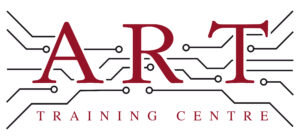Definition
Solder Bridging is a fault in electronics manufacturing where solder unintentionally connects two or more adjacent pads or pins on a printed circuit board (PCB). This can create a short circuit, leading to device malfunction. Solder bridging typically occurs during the soldering process and is considered an error that needs to be corrected to ensure proper functionality of electronic components.
How It’s Used in the Industry
Solder bridging is a critical concern in electronics assembly and soldering processes. During the assembly of PCBs, solder paste is applied to the pads, and components are placed before reflow soldering occurs. If too much solder is applied or if the components shift, bridging can occur. Technicians inspect PCBs for these faults using visual inspection or automated optical inspection (AOI) systems. Understanding solder bridging is essential for both novice and experienced technicians, as it directly impacts the reliability and performance of electronic devices. Proper identification and remediation of solder bridging can prevent costly rework and ensure compliance with industry standards.
History & Origins
Solder bridging became a common issue in electronics manufacturing as soldering techniques evolved in the mid-20th century. The introduction of surface mount technology (SMT) in the 1980s increased the complexity of PCB layouts, making solder bridging more likely. As the industry grew, standards such as those established by IPC (Institute for Printed Circuits) emerged to address quality control and defect prevention, including solder bridging. These standards have helped shape modern soldering practices and improve the overall reliability of electronic assemblies.
Variations
There are several variations of solder bridging, including intentional bridging (used in specific applications for electrical connections) and unintentional bridging (which is a defect). Unintentional bridging can occur in different forms, such as micro-bridging (small solder connections) or macro-bridging (larger, more obvious connections). Unlike solder joints that are designed to connect components, unintentional solder bridging can lead to short circuits and device failure. Understanding these variations helps technicians differentiate between acceptable solder connections and faults that require correction.
Modern Applications
Today, solder bridging is a significant consideration in electronics production and repair, especially with the prevalence of surface mount and through-hole technology. Advanced assembly techniques, including automated soldering processes, necessitate careful monitoring to prevent bridging. The impact of solder bridging on quality and reliability is critical, as it can affect compliance with IPC standards. Training programs for technicians often focus on identifying and rectifying solder bridging to ensure high-quality assembly and reduce the risk of failures in electronic devices.
Practical Tips & Training
To effectively manage solder bridging, technicians should employ thorough inspection techniques, such as using magnification tools or AOI systems to detect faults early. Safety precautions, including proper handling of soldering equipment and materials, are essential to prevent accidents. Structured training and certification in soldering practices equip individuals with the skills to identify and resolve solder bridging issues. Continuous education on IPC standards and best practices is vital for maintaining high-quality electronic assemblies.


